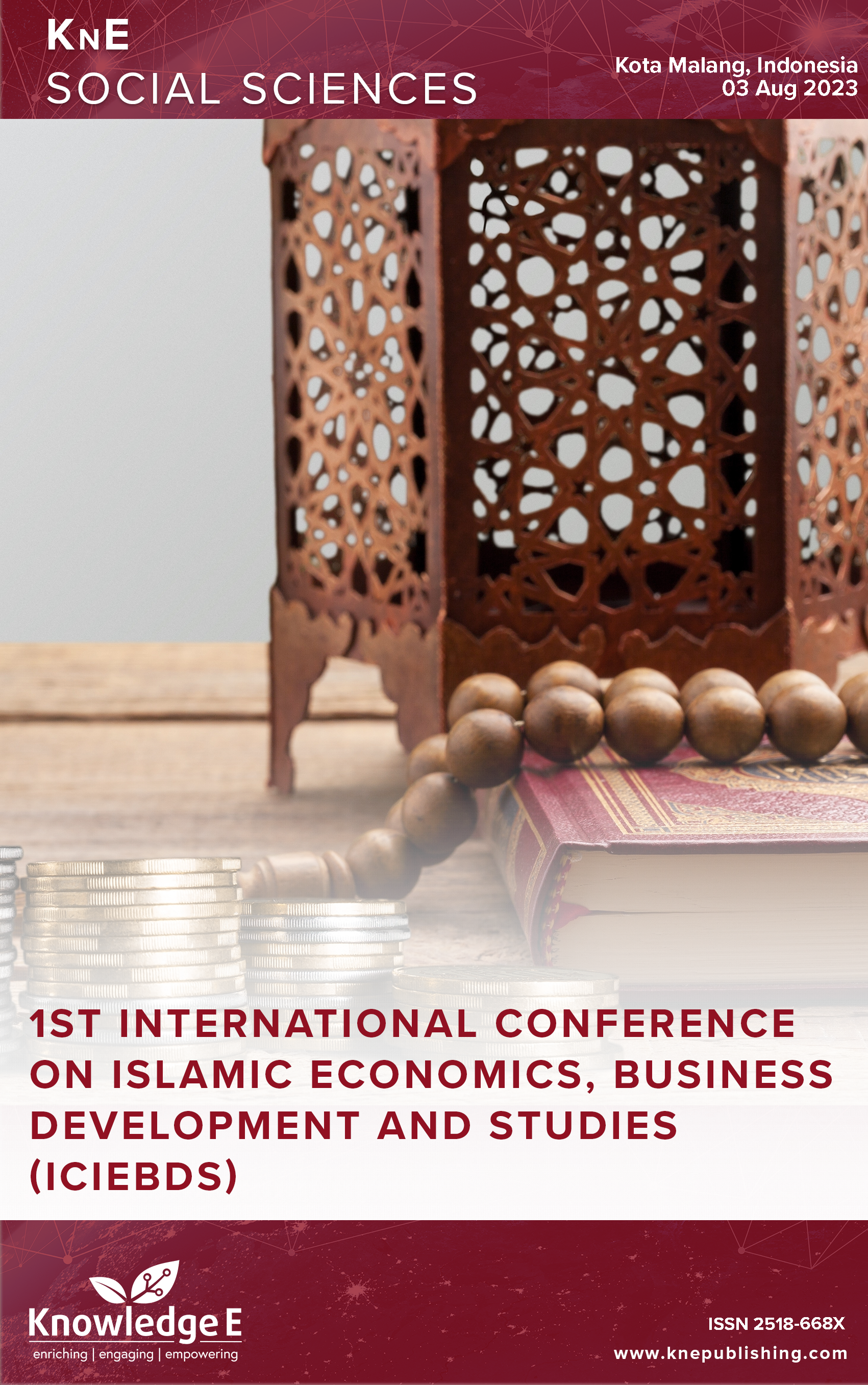Development of Human Resource Quality, Competitive Advantage of MSMEs with Innovation as Mediation in the Perspective of Islamic Economics
DOI:
https://doi.org/10.18502/kss.v9i16.16281Abstract
The research investigates the influence of training methods on innovation in Small and Medium Industries (IKM). In analyzing the influence of the independent variable on the dependent variable both partially and partially. simultaneously carried out with three stages of analysis, namely univariate, bivariate, and multivariate analysis, all of which were carried out using the Structural Equation Modeling (SEM) approach. These results explain that p training has no significant effect on competitive advantage. The direct influence of training methods on innovation. The t-statistical value of training methods on innovation is 6.542, which is smaller than the t-table of 1.96. These results explain that training methods have a significant effect on innovation. The indirect influence of competitive advantage in Small and Medium Industries (IKM) on innovation through the Sobel hypothesis test and the results of the Sobel test calculations obtained a statistical value of 0.208 because the t-statistical value obtained was 0.208 < 1.985 with a significance level of 0.835 > 0.10, so proves that competitive advantage has no significant effect on innovation. The indirect influence of training methods through competitive advantage on innovation, in Small and Medium Industries (IKM) with the results of the Sobel test calculations obtained a statistical value of 2.560 because the statistical t value obtained was 2.560 > 1.985 with a significance level of 0.010 < 0.10, thus proving that Innovation (Z) can mediate the relationship between the influence of training methods on Competitive Advantage and hypothesis 4 is accepted.
Keywords: Human Resource Quality Development, Competitive Advantage, Small and Medium Industries, Innovation
References
Kominfo, “Ekonomi Kreatif adalah Pilar Perekonomian Masa Depan,” Kementerian Komunikasi dan Informatika, 2015.
Komenkop, “Kemenkop UKM: Sudah 17,25 Juta UMKM yang Terhubung ke Platform Digital,” Kemenkop, 2022.
Kemenkominfo, “UMKM Digital,” 2022.
H.- Mudiarti and U. R. Mulyani, “PENGARUH SOSIALISASI DAN PEMAHAMAN PERATURAN MENTERI KEUANGAN NOMOR 86 TAHUN 2020 TERHADAP KEMAUAN MENJALANKAN KEWAJIBAN PERPAJAKAN PADA MASA COVID-19 (PADA UMKM ORANG PRIBADI SEKTOR PERDAGANGAN DI KUDUS),” Account. Glob. J., vol. 4, no. 2, 2020, doi: 10.24176/agj.v4i2.5217. DOI: https://doi.org/10.24176/agj.v4i2.5217
N. M. T. Kurniati, “Pengaruh Pelatihan Ketrampilan Kreatif Terhadap Kreativitas,” Proceeding. Semin. Nas. PESA T 2005, no. 18582559, 2005.
Z. A. Marasabessy, “Membentuk Kreativitas Dalam Dunia Kerja,” Suhuf, vol. 31, no. 1, 2019.
L. Ellitan, “Praktik-Praktik Pengelolaan Sumber Daya Manusia Dan Keunggulan Kompetitif Berkelanjutan,” J. Manaj. dan Kewirausahaan, vol. 4, no. 2, 2002.
S. Ripsas, “Towards an Interdisciplinary Theory of Entrepreneurship,” Small Bus. Econ., vol. 10, no. 2, 1998, doi: 10.1023/A:1007975330428. DOI: https://doi.org/10.1023/A:1007975330428
W. Long, “The Meaning of Entrepreneurship,” Am. J. Small Bus., vol. 8, no. 2, 1983, doi: 10.1177/104225878300800209. DOI: https://doi.org/10.1177/104225878300800209
M. Hall, “Coset representations in free groups,” Trans. Am. Math. Soc., vol. 67, no. 2, 1949, doi: 10.1090/s0002-9947-1949-0032642-4. DOI: https://doi.org/10.2307/1990483
J. Schumpeter, The theory of economic development. 2021. doi: 10.4324/9781003146766. DOI: https://doi.org/10.4324/9781003146766
E. Porter, Michael, “‘Keunggulan Bersaing: Menciptakan dan Mempertahankan Kinerja Unggul,”’ PT. Gramedia, Jakarta, vol. 4, no. 2, 1993.
S. D. Jap, “Perspectives on joint competitive advantages in buyer-supplier relationships,” Int. J. Res. Mark., vol. 18, no. 1–2, 2001, doi: 10.1016/S0167- 8116(01)00028-3. DOI: https://doi.org/10.1016/S0167-8116(01)00028-3
Sugiyono, Metode Penilitian Kuantitatif, Kualitatif, Dan Kombinasi (Mixed Methods), 8th ed. Bandung: CV. ALFABETA, 2016.
prof. D. I. Ghozali, Desain Penelitian Kuantitatif Dan Kualitatif, vol. 18, no. 1. 2018.
S. Arikunto, Prosedur penelitian : suatu pendekatan praktik / Suharsimi Arikunto | OPAC Perpustakaan Nasional RI. 2013.

